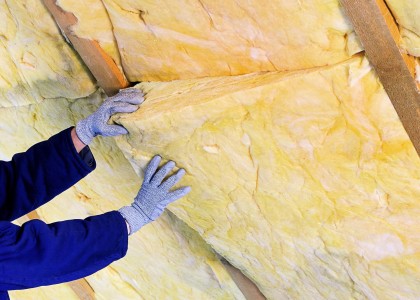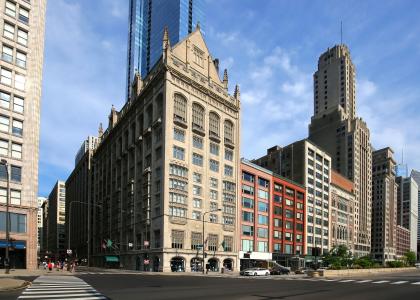The current economic and energy crises have made the case for energy efficiency stronger than ever. Investing in energy efficiency programs now will create jobs in the near and long term and help constituents save money, all while reducing energy demand. Across the country, multifamily buildings and manufactured (mobile) homes offer a vital opportunity to save significant amounts of money through energy efficiency program implementation. Multifamily and manufactured housing energy consumption demands special attention because it is historically difficult to implement efficiency programs for this sector and is disproportionately occupied by low to moderate income families.
Congress should establish a new program at DOE to offer competitive grants for innovative projects that improve the efficiency of multifamily and manufactured housing. Grants should be allocated to projects that prioritize recipients with the greatest financial need while maximizing efficiency potential and cost-effectiveness. Past experience has shown that multifamily buildings have the potential to realize energy efficiency savings up to, and exceeding 20%.
Multifamily buildings and manufactured homes represent over a quarter of the housing units in the U.S. and comprise 20% of energy consumed by all housing units, yet are greatly overlooked when in comes to implementing energy efficiency programs. Saving energy is more difficult in multifamily and manufactured housing due primarily to two complications:
(1) These housing units represent a disproportionately large number of low-income residents and residents living below the poverty line. 71% of households living in multifamily buildings are low-income, earning less than $40,000, while 28% are living below the poverty line ($20,000). Additionally, 80% of households living in manufactured homes are low-income, and again 28% are living below the poverty line.
(2) The split incentive problem—that is, the party who owns the property and is responsible for capital investments and upkeep (landlord) typically is not the same party who is responsible for paying energy costs (tenant). Over 80% of residents living in multifamily buildings rent, as do 20% of manufactured home residents.
Given the limited program experience to date, we recommend that now is the time to encourage a variety of innovative approaches, to evaluate these approaches, and based on these evaluations develop broader programs.
We propose a competitive grant program to seek creative solutions to multifamily housing efficiency. Administered by DOE, this program would provide grants to state and local government agencies as well as non-profit organizations to create effective, replicable projects. Priority should be given to projects that provide substantial energy savings while targeting recipients with the greatest financial need. Prioritizing highly cost effective programs with significant matching funds will help maximize the return values of federal grant funds. DOE administrators should pay additional attention to maintaining geographical diversity when distributing grants.
We recommend a funding authorization of about $50 million in the first year, rising to about $500 million in year 5.
There are some successful local programs in operation, but these are few and far between. Programs could be developed to encourage retirement of old manufactured homes (over 60% of mobile homes are at least 20 years old), to invest in efficiency upgrades for new or existing publicly assisted housing, or to institute multifamily heating system retrofits. Start-up funds could come from the regular federal budget, with longer term funding provided by the sale of carbon emissions allowances that are likely under cap-and-trade legislation. Following are examples of 3 such programs that have achieved notable success through a variety of different approaches:
California Statewide Multifamily Energy Efficiency Rebate Program
The California Statewide Multifamily Energy Efficiency Rebate Program (MEERP) is a collaboration among California's four major investor-owned utilities (IOU's): Pacific Gas and Electric Company, San Diego Gas and Electric Company, Southern California Gas Company, and Southern California Edison. Together, they promote energy efficiency and provide equipment rebates to owners and tenants of multifamily properties, including residential apartment buildings, condominium complexes, and mobile home parks, throughout the state. Each IOU administers the MEERP in its own service territory. MEERP encourages the installation of qualifying energy-efficient products in individual tenant units and in common areas of residential apartment buildings, mobile home parks, and condominium complexes of two or more units. In 2006 alone, electric and gas energy savings were reported at 51.3 GWh and 1,072,478 therms.
EnergyWise/Home Energy Solutions
Known as EnergyWise in Massachusetts and Rhode Island, and Home Energy Solutions in New Hampshire, this program was created to address the split incentive problem. In EnergyWise/Home Energy Solutions, multi-unit facilities are dealt with as a whole so owners can approve one contract and work can be put out to bid to get improved pricing. The program serves public housing authorities, low-income and market rate multifamily facilities. The program seeks to assist multifamily and single family customers (both tenants and owners) in saving energy in their homes and facilities. The program provides information and incentives to help customers replace inefficient equipment cost-effectively. Eligible customers and/or building managers or associations receive a comprehensive audit. Energy education and the installation of low cost measures (e.g. ENERGY STAR light bulbs, hot water measures, and air sealing for electrically heated buildings) are provided to customers at no direct cost. Since 1996, the program has delivered more than 149.5 GWh cumulative annual savings, and has served more than 185,830 customers.
Multifamily Housing
Efficiency Vermont's Multifamily Housing initiative provides comprehensive treatment of all end uses to multifamily buildings. Project managers work one-on-one with design teams for all projects and evaluate all elements that contribute to the overall efficiency and performance of the building, including thermal shell, insulation, windows, space heating, hot water heating, air conditioning, electrical systems, ventilation, appliances, controls, and interactive effects among these systems. The goal of this program is ensuring that buildings are ENERGY STAR rated, comfortable, affordable, and energy-efficient. Efforts are also made to educate property owners, designers, and installers about ways to improve buildings' overall energy performance and to maximize efficiency. Since 2000, Efficiency Vermot's multifamily housing projects have affected over 5,000 units, resulting in cumulative energy savings of more than 18,000 MWh per year (18 GWh cumulative annual to date) and cumulative demand savings of more than 4,000 kW.


